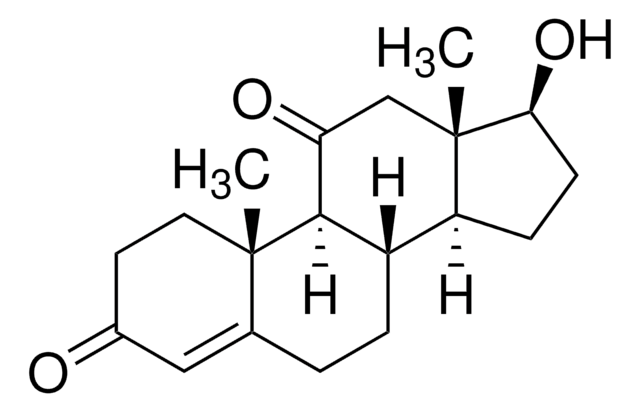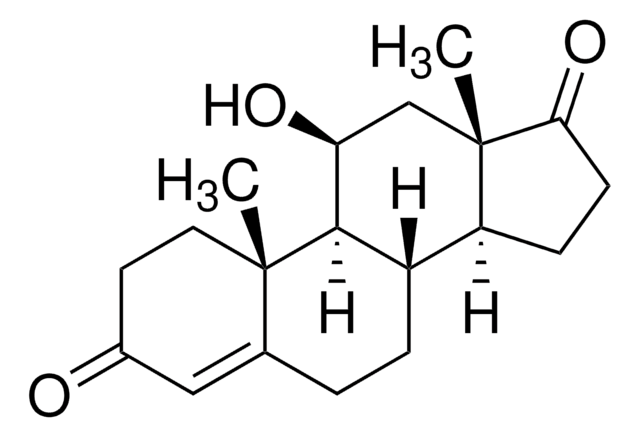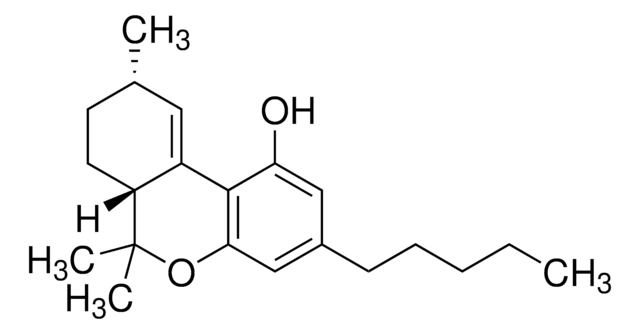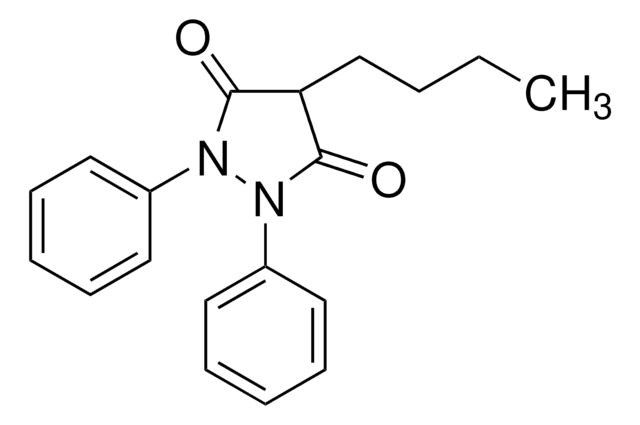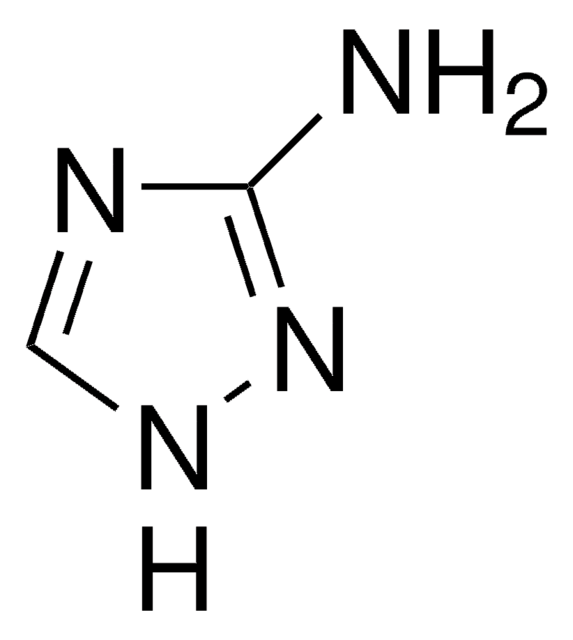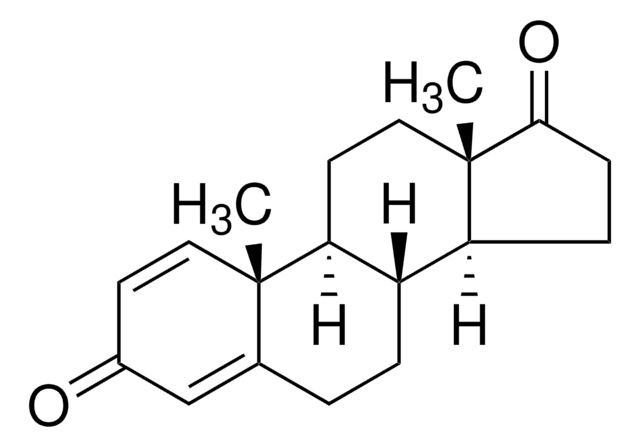SML2364
4-Androstenedione
≥98% (HPLC)
Synonym(s):
4-Androstene-3,17-dione, (8R,9S,10R,13S,14S)-10,13-dimethyl-1,6,7,8,9,10,11,12,13,14,15,16-dodecahydro-3H-cyclopenta[a]phenanthrene-3,17(2H)-dione, 17-Ketotestosterone, 3,17-Dioxoandrost-4-ene, Androst-4-ene-3,17-dione, Androstenedione, Fecundin, NSC 9563, SKF 2170
About This Item
Recommended Products
assay
≥98% (HPLC)
form
powder
drug control
USDEA Schedule III
color
white to beige
solubility
DMSO: 2 mg/mL, clear
storage temp.
room temp
SMILES string
[H][C@@]12CCC3=CC(=O)CC[C@]3(C)[C@@]1([H])CC[C@]4(C)C(=O)CC[C@@]24[H]
InChI
1S/C19H26O2/c1-18-9-7-13(20)11-12(18)3-4-14-15-5-6-17(21)19(15,2)10-8-16(14)18/h11,14-16H,3-10H2,1-2H3/t14-,15-,16-,18-,19-/m0/s1
InChI key
AEMFNILZOJDQLW-QAGGRKNESA-N
Looking for similar products? Visit Product Comparison Guide
Biochem/physiol Actions
signalword
Danger
hcodes
Hazard Classifications
Acute Tox. 4 Oral - Carc. 2 - Lact. - Repr. 1A
Storage Class
6.1C - Combustible acute toxic Cat.3 / toxic compounds or compounds which causing chronic effects
wgk_germany
WGK 2
Choose from one of the most recent versions:
Certificates of Analysis (COA)
It looks like we've run into a problem, but you can still download Certificates of Analysis from our Documents section.
If you need assistance, please contact Customer Support.
Already Own This Product?
Find documentation for the products that you have recently purchased in the Document Library.
Our team of scientists has experience in all areas of research including Life Science, Material Science, Chemical Synthesis, Chromatography, Analytical and many others.
Contact Technical Service



